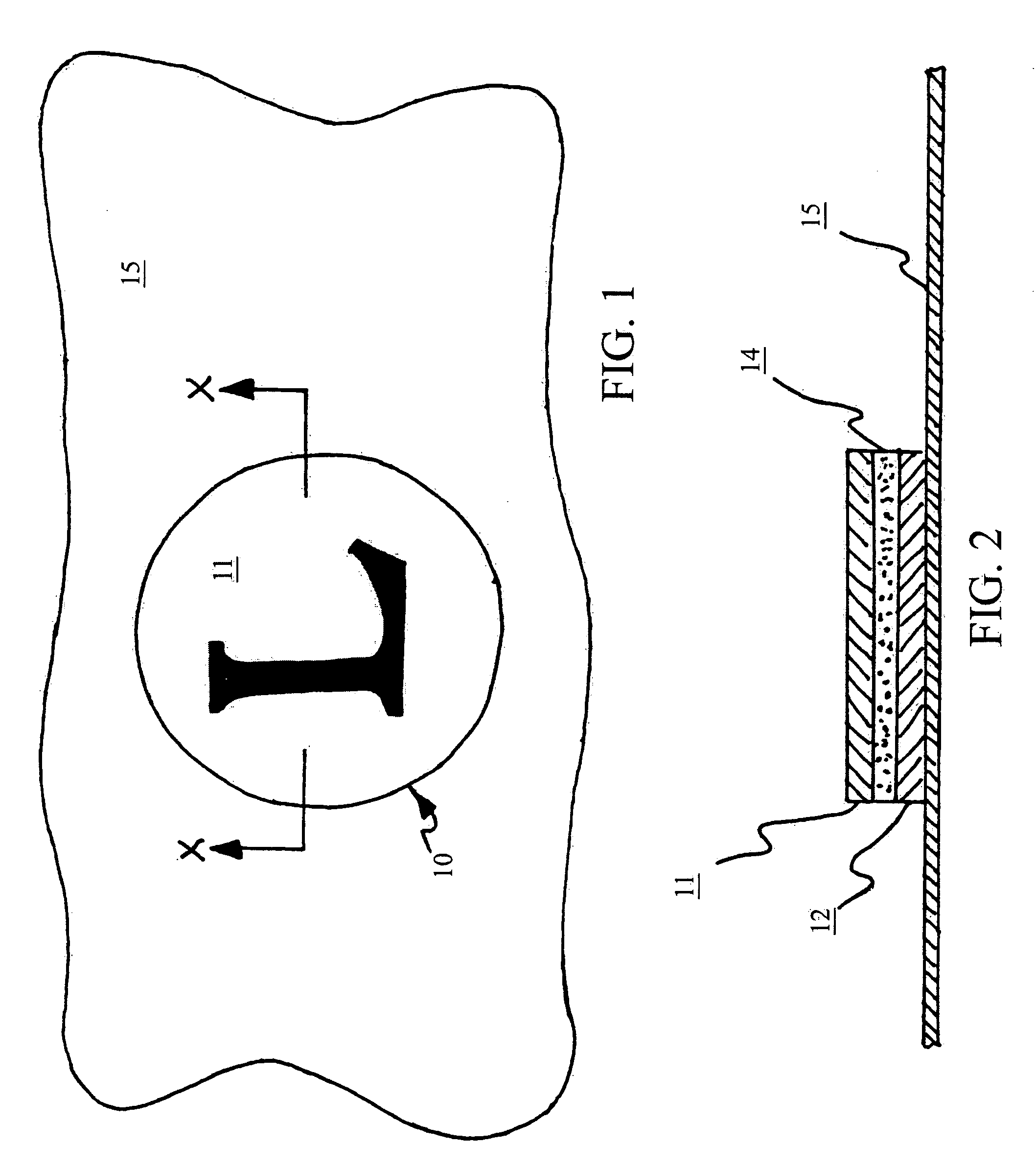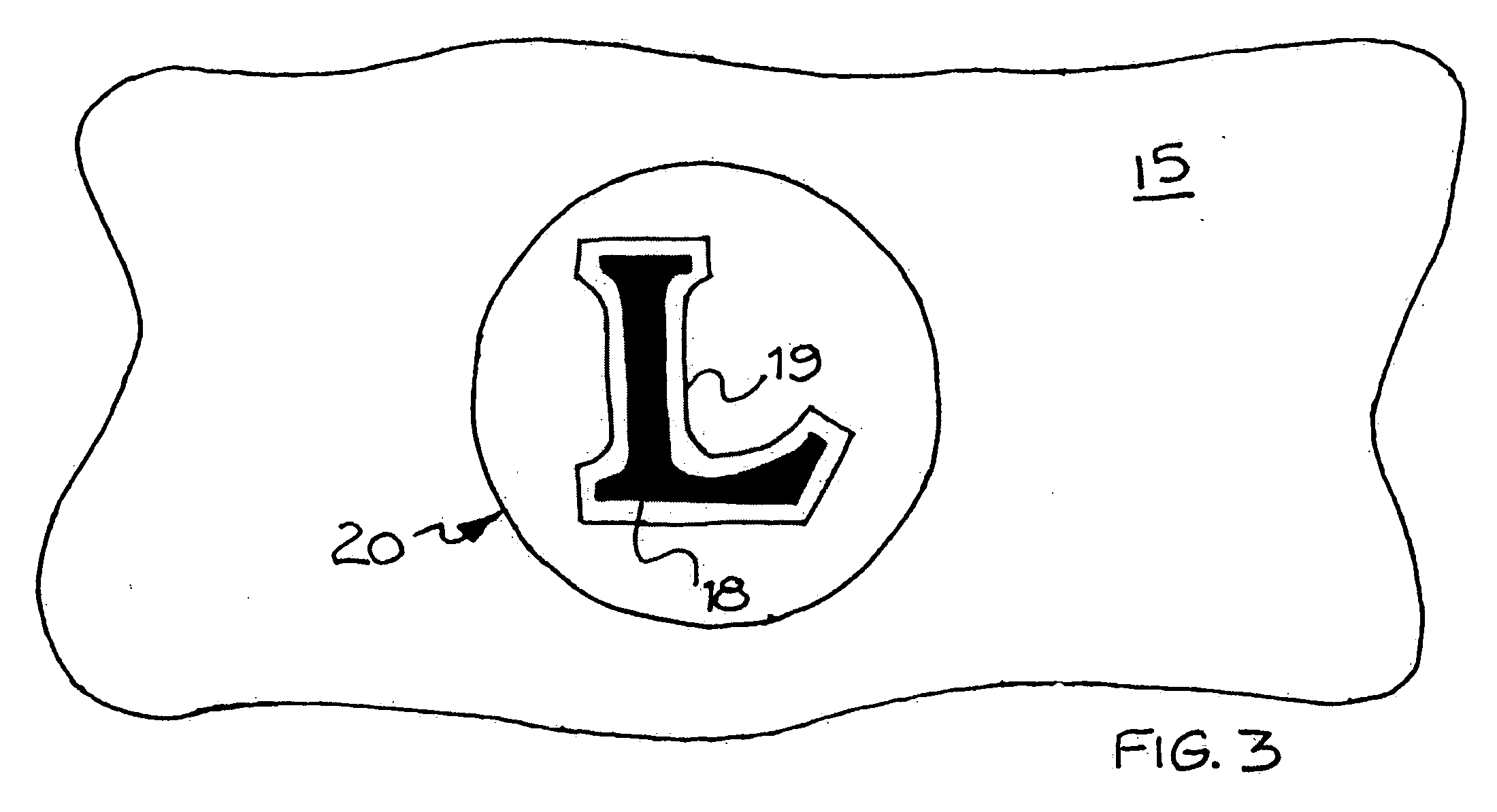Heat activated applique with upper stretch fabric layer
a heat-activated applique and fabric layer technology, applied in the direction of dyeing process, synthetic resin layered product, transportation and packaging, etc., can solve the problems of complex and time-consuming process, flat designs created by silk-screening, and products that resist repeated stretching, etc., to achieve excellent heat-activated applique, easy to cut, and easy to bond to itself
- Summary
- Abstract
- Description
- Claims
- Application Information
AI Technical Summary
Benefits of technology
Problems solved by technology
Method used
Image
Examples
embodiment 20
[0044]With reference to FIG. 3, an alternate embodiment 20 of the present invention is depicted in which an initial letter appliqué18 is applied to a second letter appliqué19 having a slightly larger dimension than the first letter 18, both the first letter 18 and the second letter 19 are formed from the same constituents of top layer stretch fabrics with bottom layer thermoplastic films.
[0045]To form the indicia shown in FIG. 3, the first letter 18 is applied to the second letter 19 with heat and pressure sufficient to cause the thermoplastic layer on the bottom of 18 to bond to the stretch fabric layer of 19. Subsequently, the two parts are placed upon the garment and heat and pressure are applied sufficient to cause the lower thermoplastic adhesive layer of 19 to soften and subsequently bond to the garment.
embodiment 30
[0046]An alternate embodiment 30 is shown in FIGS. 4 and 5. In this embodiment, the upper layer 31 is a stretch fabric layer. This is bonded to a lower thermoplastic layer 32, preferably a urethane adhesive layer, Both the film thicknesses and chemical compositions of these layers are the same as the embodiment shown in FIGS. 1 and 2. In this embodiment, however, the stretch fabric layer 31 is either white or colored and is marked in turn with indicia 35 which is either a direct digital dye print or a sublimation dye heat transferred into the surface of the stretch fabric layer.
[0047]In the appliqué30, the surface layer of stretch fabric in this embodiment has an embossed surface which provides surface configuration to the appliqué. The appliqué shown in FIG. 4 has a plurality of embossed areas throughout its surface. However, any surface configuration can be employed depending on the structure of the heating iron. The embodiments shown in FIG. 1 and FIG. 3 can also be embossed in t...
PUM
| Property | Measurement | Unit |
|---|---|---|
| thickness | aaaaa | aaaaa |
| thickness | aaaaa | aaaaa |
| thickness | aaaaa | aaaaa |
Abstract
Description
Claims
Application Information
 Login to View More
Login to View More - R&D
- Intellectual Property
- Life Sciences
- Materials
- Tech Scout
- Unparalleled Data Quality
- Higher Quality Content
- 60% Fewer Hallucinations
Browse by: Latest US Patents, China's latest patents, Technical Efficacy Thesaurus, Application Domain, Technology Topic, Popular Technical Reports.
© 2025 PatSnap. All rights reserved.Legal|Privacy policy|Modern Slavery Act Transparency Statement|Sitemap|About US| Contact US: help@patsnap.com



